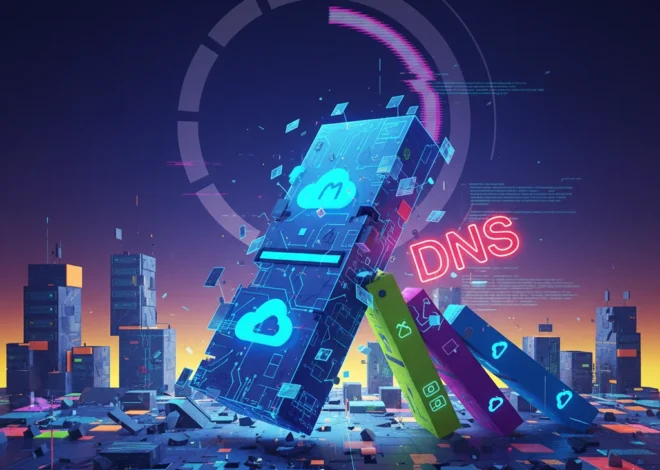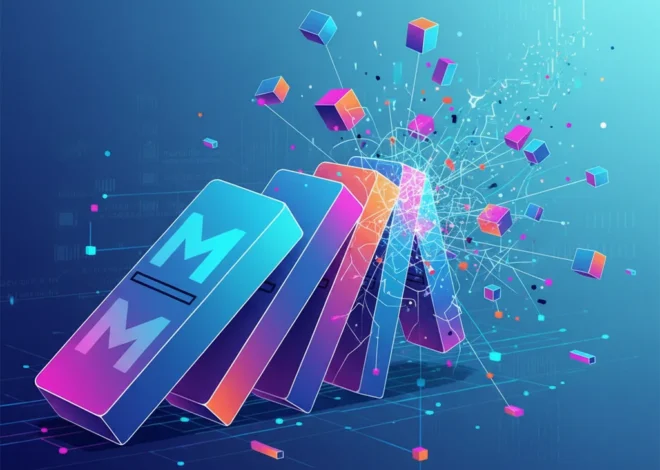
Your AI Can’t Save You: Why a Pen and Paper Might Be Your Best Cybersecurity Defense
Imagine this: You walk into the office on a Monday morning, coffee in hand, ready to tackle the week. But you can’t log in. Your email is down. Your cloud servers are unreachable. Your collaboration software is a ghost town. A single, ominous message glows on every screen: “Your files are encrypted. Pay us, or they’re gone forever.”
You’ve been hit by a ransomware attack. Your entire digital operation—every piece of innovative software, every automated workflow, every byte of data stored in the cloud—is now a hostage. Your first instinct is to trigger your emergency response plan. But where is it? It’s on the company wiki. Which is on the server that’s currently encrypted. Uh oh.
This nightmare scenario is why a stark, almost laughably low-tech piece of advice is making the rounds in top cybersecurity circles: have a physical, written-down, on-paper plan. In a world obsessed with artificial intelligence, machine learning, and SaaS solutions, the humble notebook might just be the ultimate fail-safe. As reported by the BBC, firms are being strongly advised to prepare to switch to off-line systems, and that starts with a plan you can hold in your hands.
The Digital Paradox: When Your greatest Strengths Become Your Biggest Vulnerabilities
Modern businesses, especially startups and tech companies, are built on a foundation of digital efficiency. We leverage the cloud for infinite scale, SaaS for turn-key functionality, and automation to streamline everything from programming to customer support. This interconnectedness is our superpower. But it’s also our Achilles’ heel.
When every system is connected, a single breach can create a domino effect, bringing the entire enterprise to its knees. Cybercriminals are acutely aware of this. They don’t just encrypt your primary data anymore; they actively hunt for your backups, your administrative consoles, and your recovery plans. The average cost of a data breach has soared to $4.45 million in 2023, a figure that can be an extinction-level event for a growing startup.
The attackers’ own use of innovation is relentless. They employ AI and machine learning to craft hyper-realistic phishing emails, automate vulnerability scanning, and deploy malware that spreads faster than any human team can react. Your sophisticated AI-driven security software is formidable, but it’s fighting an enemy that is just as smart and often more agile.
This is the digital paradox: the very tools that enable our growth and innovation also create a centralized, high-stakes target for attackers. Relying on a digital-only recovery plan is like locking the keys to the safe inside the safe itself.
Back to Basics: What Belongs in Your “Analog” Incident Response Plan?
So, what does this “on-paper” plan actually look like? It’s more than just a phone number for your IT guy. It’s a comprehensive “in case of fire, break glass” manual for your company’s digital existence. It should be printed, stored securely in multiple off-site locations, and reviewed quarterly. At a minimum, your physical plan needs to contain a hard copy of the information you won’t be able to access when your systems are down.
Here’s a breakdown of the essential components for your offline cybersecurity playbook:
| Category | Specifics to Include |
|---|---|
| Emergency Contact Roster | Key personnel (CEO, CTO, legal counsel), incident response team, cybersecurity insurance provider, external forensics experts, and law enforcement (e.g., local FBI field office). Include names, roles, mobile numbers, and personal email addresses. |
| System & Network Architecture | Simplified diagrams of your core network, cloud infrastructure (AWS, Azure, GCP), key servers, and data flows. This helps forensics teams get up to speed instantly. |
| Critical Asset Inventory | A list of your most critical software, SaaS platforms, and data repositories. Where is your customer data? Where is your intellectual property? What needs to be restored first? |
| Step-by-Step Response Checklist | A clear, sequential list of actions: Isolate affected systems. Disconnect from the internet. Activate legal and insurance contacts. Begin communications plan. Do NOT start wiping systems randomly. |
| Vendor & Supplier Information | Contact info and account details for critical vendors, including your ISP, cloud provider, and major SaaS partners. How do you contact their emergency support when your email is down? |
| Communications Templates | Pre-written draft communications for employees, customers, and stakeholders. Under pressure, you won’t have time to craft careful, legally-sound messaging. |
This physical document becomes your single source of truth when you can’t trust anything on a screen. It guides your actions, prevents panic-induced mistakes, and ensures a coordinated response even when your primary communication channels are compromised.
The Psychology of Crisis: Why Your Brain Needs a Physical Guide
A major cyber-attack isn’t just a technical problem; it’s an intense psychological event. Stress levels skyrocket, decision-making abilities plummet, and blame games begin. In this chaotic environment, trying to remember a complex, multi-step digital plan is nearly impossible. The U.S. Cybersecurity & Infrastructure Security Agency (CISA) emphasizes the need for a clear, accessible Incident Response Plan precisely because of this human factor (source).
A physical document serves as a psychological anchor.
- It reduces cognitive load: Instead of trying to recall information under duress, you simply follow a checklist.
- It establishes authority: In a crisis, people look for a clear source of direction. The printed plan is that source.
– It enforces process: It prevents well-meaning but panicked team members from taking rogue actions that could corrupt evidence or worsen the breach.
When you can’t trust your screens and your digital tools are the enemy, holding a plan in your hands provides a sense of control and a clear path forward. It’s the calm, rational voice in the middle of a storm.
Building a Hybrid Defense: Blending High-Tech and Low-Tech for True Resilience
This advice isn’t about abandoning your advanced cybersecurity stack. It’s about augmenting it. Your goal is to create a resilient, hybrid defense-in-depth strategy. This means combining cutting-edge technology with fundamental, offline preparedness.
For Startups & Entrepreneurs: Don’t wait until you’re “big enough” to do this. Build your incident response plan alongside your business plan. It’s far easier to document your simple architecture now than to reverse-engineer a complex one later. A documented plan is also something savvy investors will ask about during due diligence.
For Developers & Tech Professionals: Your role is critical. Beyond the high-level plan, you need offline documentation for system recovery. This includes hard copies or thumb drives (stored in a safe) with:
- Core application dependencies and build instructions.
- “Break-glass” credentials for cloud and SaaS admin accounts.
- The logic behind your programming and infrastructure-as-code scripts.
When you have to rebuild from scratch, this documentation is priceless.
This hybrid approach also extends to your data backups. The “3-2-1 rule” is a great starting point: 3 copies of your data, on 2 different media types, with 1 copy off-site. In the modern era, this should be updated to include one “offline” or “air-gapped” copy. This could be a physical hard drive, tape backup, or an immutable cloud storage bucket that cannot be altered or deleted for a set period, even by an administrator with compromised credentials. According to a 2023 report, ransomware attacks impacted backups in 75% of cases, making offline copies non-negotiable.
The Double-Edged Sword of AI and Automation
It’s impossible to discuss modern cybersecurity without talking about artificial intelligence. AI is the ultimate dual-use technology in this fight. Attackers leverage it for hyper-efficient attacks, while defenders use it to detect anomalies and automate responses in real-time.
Your security stack is likely already using machine learning to analyze network traffic and identify patterns indicative of a breach. This automation is essential for handling the sheer volume of threats. However, an over-reliance on it can be dangerous. A sophisticated attacker, perhaps using a rival AI, can trick your automated defenses or disable them entirely. Once your AI watchdog is neutralized, the attackers have free rein.
This is where your offline plan becomes paramount. It’s the manual override. It’s the human-driven process that kicks in when the automation fails. Your recovery cannot depend on the same systems that were just compromised. The human element, guided by a well-structured physical plan, is the final, and most important, layer of your defense.
Conclusion: Your Most Important Upgrade is a Notebook
In the relentless pursuit of technological innovation, we sometimes forget the wisdom of the basics. Building a resilient startup or tech company isn’t just about having the best software or the most brilliant programming; it’s about being able to survive a knockout blow.
The advice to put your cyber-attack plans on paper isn’t a nostalgic call for a bygone era. It’s a pragmatic, forward-thinking strategy that acknowledges the reality of our hyper-connected, hyper-vulnerable digital world. Your cloud infrastructure, your AI defenses, and your automated workflows are all critical. But they are not infallible.
So, after you finish reading this, do one thing. Go to your nearest office supply store and buy a sturdy notebook and a pen. Then, schedule a meeting with your team. The most important piece of technology you develop this year might just be the one that doesn’t need to be plugged in.


